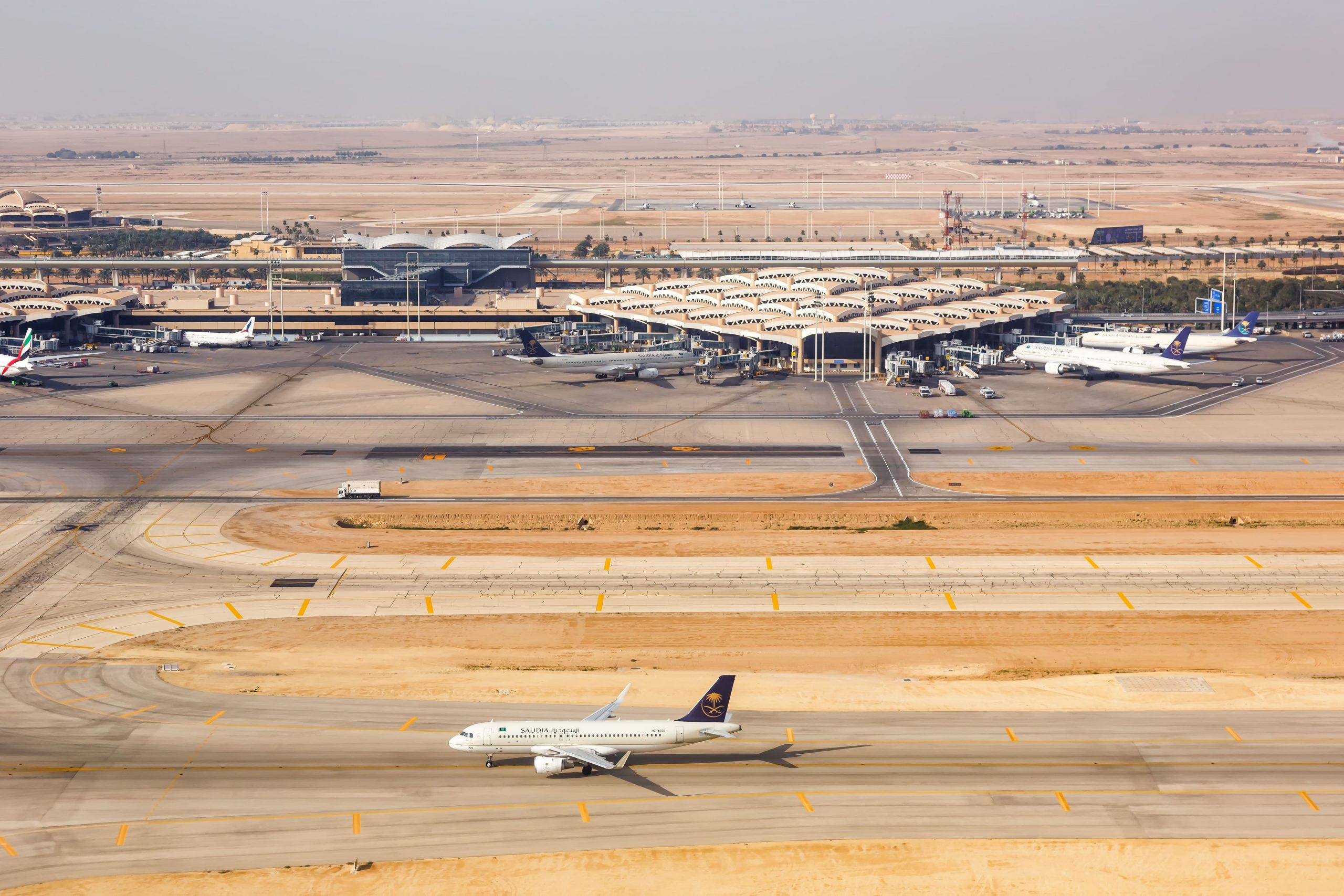Under Vision 2030, driven by the growth of air mobility and logistics in Saudi Arabia, its aviation sector is set to contribute $74.6 billion to its GDP by 2030. This represents a significant uplift from the $21.3 billion recorded in 2018.
By 2025, Saudi Arabia is forecast to be the world’s second-fastest-growing economy, necessitating the development of a strong airline sector as millions of passengers take to the skies. A well-developed air transport sector is an indicator of the overall health of the local economy; this perfectly applies to Saudi Arabia.
This growth is shaped by the country’s renewed focus on becoming a global aviation and logistics hub as well as a premier tourism destination, leading to increased flights and overall advancement of industry efficiency.
To boost aviation connectivity and air transport, the country announced a $100 billion Saudi Arabia aviation investment scheme at the Future Aviation Forum in Riyadh last May. This initiative is painted as part of a broader effort to propel the Saudi air transport industry toward sustained growth.
Key Vision 2030 Aviation Targets in Saudi Arabia
- Triple annual passengers to 330 million.
- Increase air freight capacity to 4.5 million tons of cargo per year.
- Create 35,000 new jobs.
- Expand to 250 international destinations.
- 241 aircraft in the fleet (from 143) flying to over 100 destinations.
- Increase the sector’s contribution to $74.6 billion.
FlyNow Aviation: Future-forward Technologies for Air Mobility & Logistics in Saudi Arabia
Saudi Arabia is becoming an ideal testing ground for cutting-edge technologies, creating opportunities to transform air mobility systems. New business models, such as air taxis, are emerging.
FlyNow Aviation, an Austria-based electric vertical take-off and landing (eVTOL) company, is leading this innovation. The company recently launched operations in the Kingdom with AstroLabs’ support.
Saudi Arabia’s visionary leadership drives FlyNow’s expansion, noted Yvonne Winter, COO and Co-Founder of FlyNow, during one of our webinars hosted in August.
Winter emphasized Saudi Arabia’s demographic advantages—a young, tech-savvy population highly receptive to new technologies, adding that the Kingdom meets all the prerequisites to become a global market leader in air mobility and logistics. From there, there’s a significant market opportunity and demand for air taxis lying ahead, she highlighted.
With Riyadh’s population projected to reach 10 million, Winter estimated that 15,000 eCopters would be needed to meet the demand for 300,000 daily flights.
“We are the first OEM focused on mass-producing eCopters using automotive processes,” Winter said. “We currently produce 1,000 vehicles a year, but Riyadh alone has the potential for 15,000.”
Highlighting Vision 2030’s impact on Saudi Arabia’s aviation growth, Winter added: “Vision 2030 creates vast opportunities for investment in the aviation sector. Multiple airports are under construction, and the Kingdom is positioning itself as a major global transport hub.”
FlyNow plans to introduce 1,000 to 4,000 air taxis in Saudi Arabia by 2030, starting with commercial cargo applications and eventually moving to passenger services. The first air taxi will be operational in Riyadh by 2029. This follows FlyNow’s memorandum of understanding with the National Industrial Development Center (NIDC), the General Authority of Civil Aviation (GACA), and the Sky Alliance for Automated Air Mobility.
“This is about more than just air taxis. We’re building a new economy—what we call the ‘low-altitude economy,'” she further elaborated.
Saudi Arabia’s commitment to major events like the Riyadh Expo 2030 and FIFA World Cup 2034 is accelerating the development of air transport infrastructure. Companies like FlyNow are playing a key role in shaping the future of the digital age of the Saudi air mobility landscape.
Vision 2030 Objectives Set the Tone for Expansion of the Saudi Air Transport Sector
The resulting transformations in the Saudi aviation sector led to an increased focus on the development of new and existing airports to increase their throughput capacities. Key to this vision is expanding airport capacities to accommodate growing demand. For instance, Jeddah Airport aims to handle 114 million passengers annually by 2030, with expansion efforts costing $30 billion.
The Kingdom is also developing one of the world’s largest airports — King Salman International Airport – which will handle 120 million passengers by 2030 and 185 million by 2050. The $30 billion airport development scheme supports Vision 2030’s goal of positioning Saudi Arabia as a global aviation hub.
Vision 2030’s focus on strengthening the Kingdom’s airlines has led to the launch of Riyadh Airlines, set to begin operations next year. By 2030, Riyadh Airlines will contribute $20 billion to the non-oil GDP and create over 200,000 jobs. Riyadh Airlines will join Flynas, Flyadeal, and Saudia as the fourth national carrier.
Saudi airlines are setting global benchmarks for fuel efficiency and emissions reductions, aligning with Vision 2030’s sustainability goals. Flynas, for instance, reduced its carbon emissions by 161,000 tons over 18 months, equivalent to planting 6.44 million trees.
The Kingdom’s commitment to sustainability is further evidenced by Red Sea International Airport, the region’s first-ever carbon-neutral airport.
To enhance the competitiveness of its airline sector, Saudi Arabia is privatizing airports in Abha, Taif, Hail, and Qassim. Such efforts will help support growing air traffic and improve traveler experiences.
Taken collectively, these advancements will drive economic growth, leading to job creation and improved logistics and trade in line with Vision 2030’s objectives.

